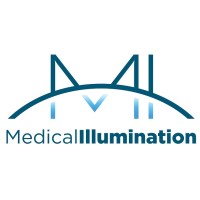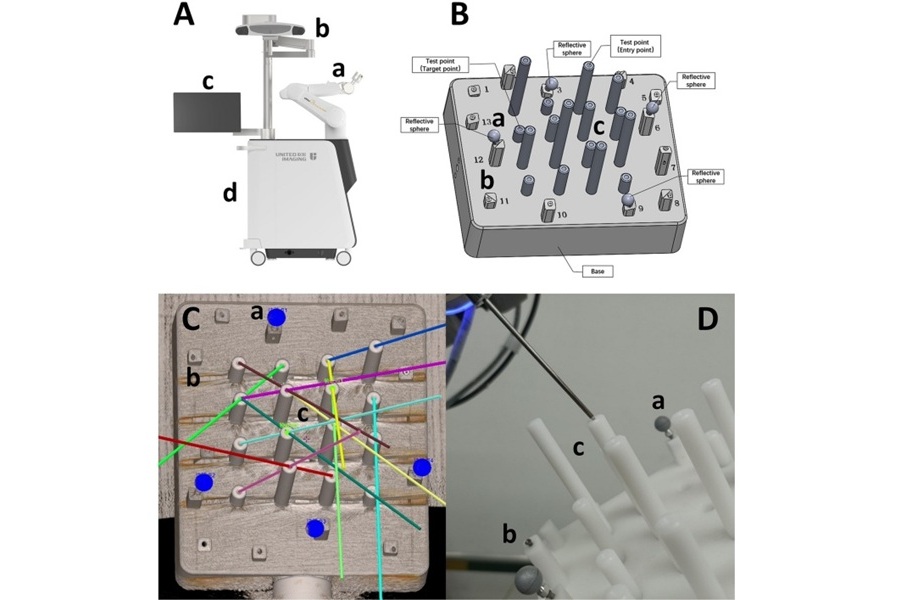Sharkskin Surface Topography Inhibits Bacterial Growth
|
By HospiMedica International staff writers Posted on 07 Jan 2009 |
A new way to control infections on artificial surfaces, based on the physical properties of a shark's skin, is able to inhibit the growth of microorganisms and bacteria, including Staphylococcus aureus, Pseudomonas aeruginosa, and Escherichia coli.
The Sharklet surface technology antibacterial properties do not derive from a chemical characteristic, but rather from the shape and microscopic pattern alone. The surface technology is comprised of billions of tiny, raised, microscopic sections that mimic the height, width, length, and curvature of natural sharkskin surface. Each diamond shaped section measures 25 microns across, or about a fifth of the thickness of a human hair, and contains seven raised ribs of varying length that various microorganisms find inhospitable. The sharkskin patterns are etched using a technique called deep ion lithography, and can be embedded onto the surfaces of medical devices such as catheters or artificial hips, as well as medical care equipment such as hospital beds, and even door knobs, and are capable of controlling bacterial growth for up to 21 days.
The Sharklet pattern has been tested and proven effective against plant, animal, and bacterial organisms, and can it be tuned to evoke a specific bioresponse from organisms. While not discernable to the naked eye or easily felt to the touch, the surface technology has demonstrated in laboratory tests to be inhospitable to bacterial growth and biofilm formation, when compared to smooth surfaces. Sharklet surface technology was developed by Sharklet Technologies (Alachua, FL, USA).
"It's the first nontoxic, long lasting, and no-kill surface to control the growth of harmful microorganisms,” said Mark Spiecker, vice president of operations at Sharklet.
A general rule of the ocean is that slow moving marine animals, like whales, are host to organisms such as barnacles and algae, while fast moving animals are generally clean. Certain species of slow-moving sharks seem to violate this rule, however, staying relatively clean due in part to their unique skin pattern. Sharkskin is made of a matrix of tiny, hard, tooth-like structures called dermal denticles or placoid scales. These structures are shaped like curved, grooved teeth and they make the skin a very tough armor with a texture like sandpaper. They have the same structure as a tooth with an outer layer of enamel, dentine, and a central pulp cavity. These scales also help the shark swim more quickly because their streamlined shapes helps decrease the friction of the water flowing along the shark's body by channeling it through grooves.
Related Links:
Sharklet Technologies
The Sharklet surface technology antibacterial properties do not derive from a chemical characteristic, but rather from the shape and microscopic pattern alone. The surface technology is comprised of billions of tiny, raised, microscopic sections that mimic the height, width, length, and curvature of natural sharkskin surface. Each diamond shaped section measures 25 microns across, or about a fifth of the thickness of a human hair, and contains seven raised ribs of varying length that various microorganisms find inhospitable. The sharkskin patterns are etched using a technique called deep ion lithography, and can be embedded onto the surfaces of medical devices such as catheters or artificial hips, as well as medical care equipment such as hospital beds, and even door knobs, and are capable of controlling bacterial growth for up to 21 days.
The Sharklet pattern has been tested and proven effective against plant, animal, and bacterial organisms, and can it be tuned to evoke a specific bioresponse from organisms. While not discernable to the naked eye or easily felt to the touch, the surface technology has demonstrated in laboratory tests to be inhospitable to bacterial growth and biofilm formation, when compared to smooth surfaces. Sharklet surface technology was developed by Sharklet Technologies (Alachua, FL, USA).
"It's the first nontoxic, long lasting, and no-kill surface to control the growth of harmful microorganisms,” said Mark Spiecker, vice president of operations at Sharklet.
A general rule of the ocean is that slow moving marine animals, like whales, are host to organisms such as barnacles and algae, while fast moving animals are generally clean. Certain species of slow-moving sharks seem to violate this rule, however, staying relatively clean due in part to their unique skin pattern. Sharkskin is made of a matrix of tiny, hard, tooth-like structures called dermal denticles or placoid scales. These structures are shaped like curved, grooved teeth and they make the skin a very tough armor with a texture like sandpaper. They have the same structure as a tooth with an outer layer of enamel, dentine, and a central pulp cavity. These scales also help the shark swim more quickly because their streamlined shapes helps decrease the friction of the water flowing along the shark's body by channeling it through grooves.
Related Links:
Sharklet Technologies
Latest Critical Care News
- Smart Nanomaterials Detect and Treat Traumatic Brain Injuries Simultaneously
- Earlier Blood Transfusion Could Reduce Heart Failure and Arrhythmia in Heart Disease Patients
- 'Smart' Shirt Detects Epileptic Seizures in Real Time
- Skin Patch Measures Effectiveness of Flu/COVID Vaccines in 10 Minutes
- Complete Revascularization Reduces Risk of Death from Cardiovascular Causes
- Tiny Fish-Inspired Robots Navigate Through Body to Deliver Targeted Drug Therapy
- Coronary Artery Stenosis Could Protect Patients from Pulmonary Embolism Effects
- Sweat-Powered Sticker Turns Drinking Cup into Health Sensor
- Skin-Mounted 3D Microfluidic Device Analyzes Sweat for Real-Time Health Assessment
- New Therapeutic Brain Implants to Eliminate Need for Surgery
- Stem Cell Patch Gently Heals Damaged Hearts Without Open-Heart Surgery
- Biomaterial Vaccines to Make Implanted Orthopedic Devices Safer
- Deep Learning Model Predicts Sepsis Patients Likely to Benefit from Steroid Treatment
- Programmable Drug-Delivery Patch Promotes Healing and Regrowth After Heart Attack
- Breakthrough Ultrasound Technology Measures Blood Viscosity in Real Time
- Magnetically Activated Microscopic Robotic Swarms Could Deliver Medicine Inside Body
Channels
Surgical Techniques
view channelGroundbreaking Procedure Combines New Treatments for Liver Tumors
Removing or destroying liver tumors often requires patients to undergo two separate procedures, exposing them to multiple hospital stays, repeated anesthesia, and longer recovery times. Traditional approaches... Read moreAblation Reduces Stroke Risk Associated with Atrial Fibrillation
Atrial fibrillation (AFib) greatly increases the risk of stroke, blood clots, heart failure, and death, and millions of people in the U.S. are expected to be affected in the coming years.... Read morePatient Care
view channel
Revolutionary Automatic IV-Line Flushing Device to Enhance Infusion Care
More than 80% of in-hospital patients receive intravenous (IV) therapy. Every dose of IV medicine delivered in a small volume (<250 mL) infusion bag should be followed by subsequent flushing to ensure... Read more
VR Training Tool Combats Contamination of Portable Medical Equipment
Healthcare-associated infections (HAIs) impact one in every 31 patients, cause nearly 100,000 deaths each year, and cost USD 28.4 billion in direct medical expenses. Notably, up to 75% of these infections... Read more
Portable Biosensor Platform to Reduce Hospital-Acquired Infections
Approximately 4 million patients in the European Union acquire healthcare-associated infections (HAIs) or nosocomial infections each year, with around 37,000 deaths directly resulting from these infections,... Read moreFirst-Of-Its-Kind Portable Germicidal Light Technology Disinfects High-Touch Clinical Surfaces in Seconds
Reducing healthcare-acquired infections (HAIs) remains a pressing issue within global healthcare systems. In the United States alone, 1.7 million patients contract HAIs annually, leading to approximately... Read moreHealth IT
view channel
Printable Molecule-Selective Nanoparticles Enable Mass Production of Wearable Biosensors
The future of medicine is likely to focus on the personalization of healthcare—understanding exactly what an individual requires and delivering the appropriate combination of nutrients, metabolites, and... Read moreBusiness
view channel
Philips and Masimo Partner to Advance Patient Monitoring Measurement Technologies
Royal Philips (Amsterdam, Netherlands) and Masimo (Irvine, California, USA) have renewed their multi-year strategic collaboration, combining Philips’ expertise in patient monitoring with Masimo’s noninvasive... Read more
B. Braun Acquires Digital Microsurgery Company True Digital Surgery
The high-end microsurgery market in neurosurgery, spine, and ENT is undergoing a significant transformation. Traditional analog microscopes are giving way to digital exoscopes, which provide improved visualization,... Read more
CMEF 2025 to Promote Holistic and High-Quality Development of Medical and Health Industry
The 92nd China International Medical Equipment Fair (CMEF 2025) Autumn Exhibition is scheduled to be held from September 26 to 29 at the China Import and Export Fair Complex (Canton Fair Complex) in Guangzhou.... Read more














